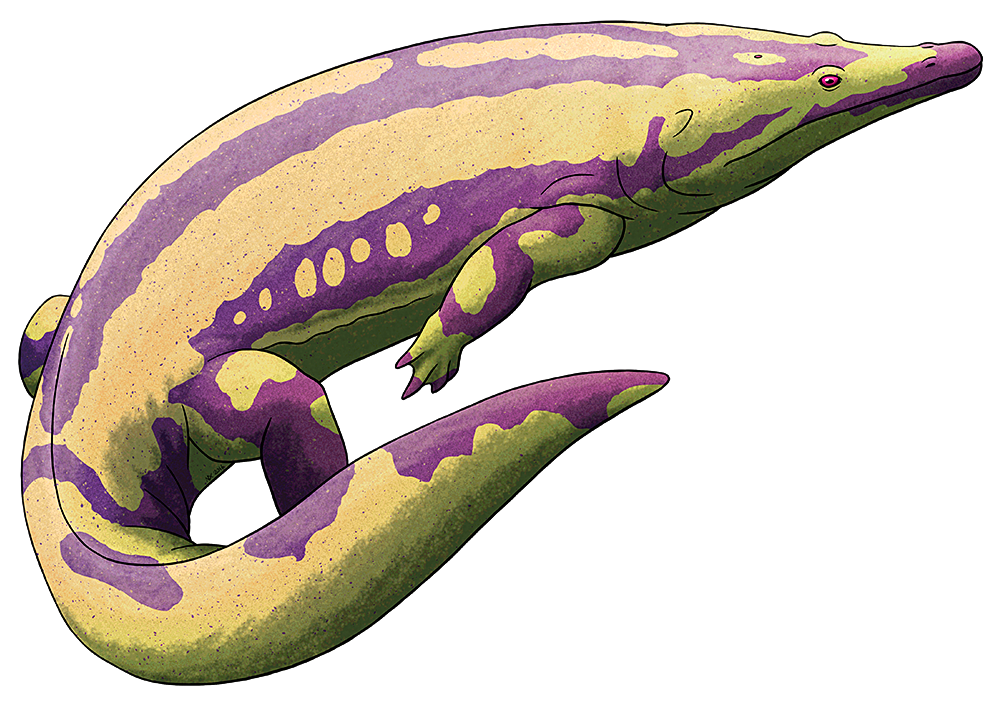alphynix: Amphibian August #15 – Trematosaurus The terrestrial temnospondyls began to decline
alphynix:Amphibian August #15 – TrematosaurusThe terrestrial temnospondyls began to decline during the Late Permian, affected by changing climate and the continuing diversification of reptiles and synapsids. But the semi-aquatic and fully aquatic forms continued to thrive, dominating freshwater ecosystems, and survived through the massive Great Permian Extinction to make a quick recovery into the start of the Triassic.One group, the trematosaurids, even ventured into the ocean – and may have been the only amphibians to ever become fully marine. A few modern amphibians are fairly salt-tolerant, and the crab-eating frog makes brief excursions into seawater, but no other known amphibians have ever taken it quite to the extreme that the trematosaurids did.Trematosaurus lived during the Early Triassic of Germany and Russia (~251-257 mya), and grew to around 1.2m long (3′11″). Convergently crocodile-shaped, it had a relatively short snout compared to some of the other more gharial-like trematosaurids, and was probably a shallow-marine predator feeding on fish, invertebrates, and other small animals near the shoreline.The trematosaurids survived for around 50 million years until at least the end of the Triassic before disappearing – but a fossil pelvic bone from China suggests a few may have persisted for at least another 40 million years into the Middle Jurassic, potentially making them one of the longest-lived groups of temnospondyls. -- source link
Tumblr Blog : alphynix.tumblr.com
#amphibians#trematosaurids#triassic
